UPSC Daily Current Affairs: 29 July 2024 | Current Affairs & Hindu Analysis: Daily, Weekly & Monthly PDF Download
GS3/Environment
NICOBAR PORT PLAN
Source: Indian Express
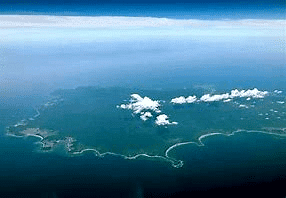
Why in news?
A high-powered committee (HPC), appointed by the National Green Tribunal (NGT) and tasked with revisiting the green clearance for the Great Nicobar infrastructure project, has concluded that a proposed transshipment port does not fall in the Island Coastal Regulation Zone-IA (ICRZ-IA), where ports are prohibited, but is in ICRZ-IB where these are permitted.
Background:-
The Great Nicobar ‘Holistic Development’ Project was conceived by the NITI Aayog and the key plan includes construction of an international container transshipment terminal among other facilities.
Key takeaways
- A special bench of the NGT had constituted the HPC in April 2023, while hearing a challenge against the Great Nicobar project's environmental clearance.
- NGT formed the HPC to revisit the environmental clearance to address some unanswered deficiencies.
- The special bench had ordered that no further work should happen until the HPC gave its report.
- Among the issues the HPC had to revisit was protection of 4,518 coral colonies, limited one-season baseline data collection for assessing the project's environmental impact and the issue of project components falling in the ecologically sensitive ICRZ-IA area.
- Regarding the coral colonies, the HPC said that it agreed with the Zoological Survey of India's recommendation to translocate 16,150 out of 20,668 coral colonies. For the remaining 4,518, for which there was no plan outlined, the HPC directed continuous observation from 15-30 metres depth to analyze the sedimentation load and rate of sedimentation before any decision is taken to translocate them.
- On baseline data collected, the HPC said that one-season's, other than monsoon, was enough to assess environmental impact as per the EIA notification, 2006.
- HPC also concluded that the proposed transshipment port does not fall in the Island Coastal Regulation Zone-IA (ICRZ-IA). This conclusion by HPC is at variance with the information submitted by the Andaman & Nicobar (A&N) Coastal Management Authority during the green clearance process for the project. The Authority had stated that parts of the port, airport and township planned under the project are spread over 7 sq km in the ICRZ-IA area.
About Island Coastal Regulation Zone-IA (ICRZ-IA)
- The ICRZ-IA areas comprise ecologically sensitive areas such as mangroves, corals and coral reefs, sand dunes, mudflats, marine parks, wildlife habitats, salt marshes, turtle nesting grounds and bird nesting grounds among others.
- Only eco-tourism activities such as mangrove walks and natural trails, roads and roads-on-stilts in defence and strategic projects and public utilities are allowed in this area with permits from the UT and Centre.
About Andaman and Nicobar Islands
- The Andaman and Nicobar Islands are a cluster of 836 islands, split into two groups — the Andaman Islands to the north and the Nicobar Islands to the south — by the 150-km wide Ten Degree Channel.
- Great Nicobar is the southernmost and largest of the Nicobar Islands, a sparsely inhabited 910-sq-km patch of mainly tropical rainforest in southeastern Bay of Bengal.
- Great Nicobar has two national parks, a biosphere reserve, small populations of the Shompen and Nicobarese tribal peoples, and a few thousand non-tribal settlers.
GS3/Science and Technology
NASA'S PERSEVERANCE ROVER
Source: Business Today
Why in news?
NASA’s Perseverance rover recently made a fascinating discovery that could provide insights into the ancient history of Mars, particularly regarding the potential existence of past microbial life.
About NASA’s Perseverance rover:
- Mission Overview: Perseverance is a crucial component of NASA’s Mars 2020 Mission, designed to explore Mars' geology, climate, and potential for sustaining life.
- Main Objective: The primary aim of the rover is to detect signs of ancient microbial life and collect samples for potential return to Earth for further analysis.
- Launch and Landing: Launched on July 30, 2020, from Cape Canaveral, Florida, the rover successfully touched down in Jezero Crater on February 18, 2021, following a complex entry, descent, and landing procedure.
- Physical Description: Despite its car-like dimensions of approximately 3 meters in length, 2.7 meters in width, and 2.2 meters in height, Perseverance weighs only about 1,025 kilograms due to its carefully engineered design and use of lightweight materials.
- Scientific Instruments: Equipped with an array of scientific tools such as cameras, spectrometers, and environmental sensors, the rover's robotic arm includes a drill for extracting samples of rocks and regolith (soil) from the Martian surface.
- Power Source: Perseverance operates using a Multi-Mission Radioisotope Thermoelectric Generator (MMRTG) that converts heat from plutonium's radioactive decay into electrical power, enabling the rover to function effectively in the challenging conditions of Mars.
- Sample Collection and Return: The rover's mission involves gathering rock and soil samples, sealing them in tubes, and depositing them on the Martian surface. A subsequent mission, likely involving another rover, will retrieve these samples for eventual return to Earth for thorough examination.
GS3/Environment
Himachal witnesses gradual Snowfall Pattern Shift
Source: The Hindu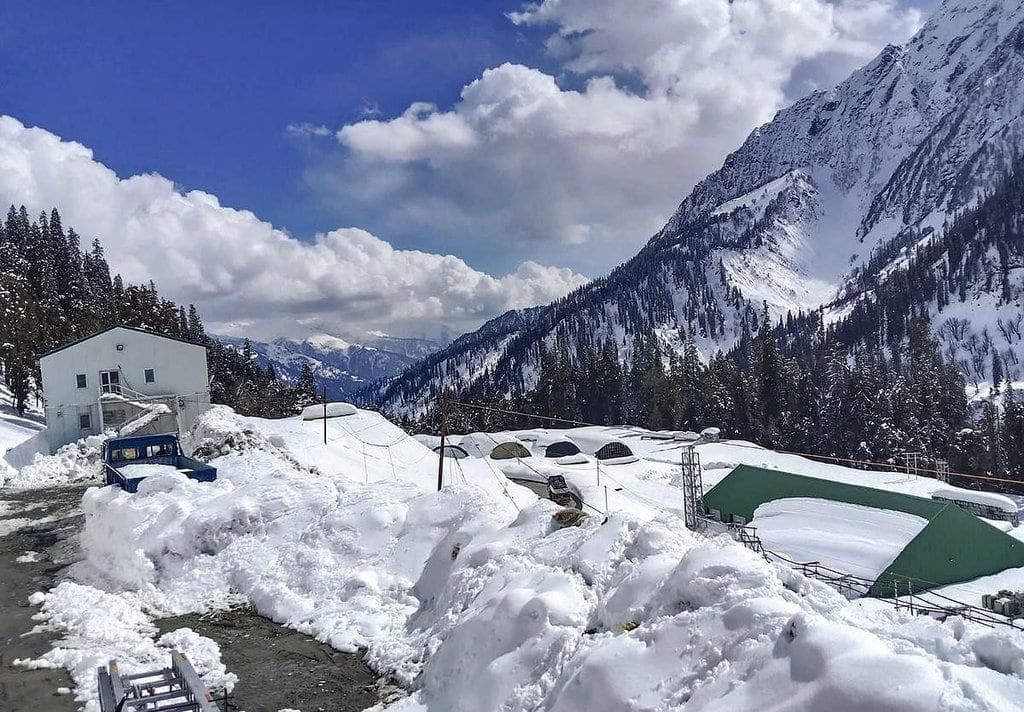
Why in news?
Himachal Pradesh is experiencing a reducing snow cover over the years. There is a noticeable shift in snowfall occurrence from winter months towards early summer months.
Findings from the Latest Study:
- The study by the Centre on Climate Change of Himachal Pradesh Council for Science Technology-Environment (HIMCOSTE) shows an overall decrease of 12.72% in snow cover area in 2023-24 compared to 2022-23.
- The study used Advanced Wide Field Sensor (AWiFS) satellite data to analyze snow cover trends.
- Early winter months (October-November) showed a decrease in snow cover area except for the Ravi basin, which showed a marginal increase in October.
- Peak winter months (December-January) saw a negative trend in snow cover area.
- Late winter months (February-March) showed a positive trend with an increase in snow cover area in all basins compared to the previous year.
- Snow cover area increased in April due to fresh snowfall in the early summer period.
Impact on Water Availability:
- The decrease in snow cover during peak winter months (December and January) is especially alarming.
- Snowfall during these months sustains longer and enhances the discharge dependability of major river basins during summer.
- Reduced snow cover in winter could affect water availability during the summer months.
Concerns and Implications:
- Environmentalists and scientists are concerned about the shifting snowfall patterns.
- Depleting snow cover and changing snowfall patterns have significant impacts on hydro-power, water sources, people, livestock, forests, farms, and infrastructure.
Rivers of Himachal Pradesh
Satluj
Description
- The Satluj River originates from Rakas Lake in Tibet and is the longest river in Himachal Pradesh.
- It flows through the districts of Kinnaur, Shimla, Kullu, Mandi, Solan, and Bilaspur, and enters Punjab near Nangal.
- The river is crucial for hydropower generation and irrigation.
Beas
Description
- The Beas River originates from Beas Kund near Rohtang Pass.
- It flows through the districts of Kullu, Mandi, Hamirpur, and Kangra, eventually entering Punjab.
- It is known for its picturesque valleys and is significant for agriculture and hydropower.
Ravi
Description
- The Ravi River originates from the Bara Bhangal Glacier in the Himalayas and flows through the Chamba district of Himachal Pradesh.
- It eventually enters Pakistan and is crucial for both hydropower and irrigation in the region.
Chenab
Description
- The Chenab River, formed by the confluence of the Chandra and Bhaga rivers, originates from the Bara Lacha Pass in Lahaul-Spiti.
- It flows through the districts of Lahaul and Chamba before entering Jammu and Kashmir.
- It is one of the largest rivers in terms of discharge and is vital for hydropower.
Yamuna
Description
- The Yamuna River originates from the Yamunotri Glacier in the Garhwal Himalayas and forms the eastern boundary of Himachal Pradesh with Uttarakhand.
- It is one of the most sacred rivers in India and supports major irrigation systems downstream.
Spiti
Description
- The Spiti River originates from the Kunzum Range and flows through the cold desert region of Spiti Valley in Himachal Pradesh.
- It joins the Satluj River near Khab and is known for its stunning landscapes and unique ecosystem.
Parbati
Description
- The Parbati River originates from the Parbati Glacier in the Kullu district and is a tributary of the Beas River.
- The river is significant for its hydropower potential and scenic beauty, attracting many trekkers and nature enthusiasts.
GS3/Environment
WHITE CATEGORY SECTORS
Source: Indian Express
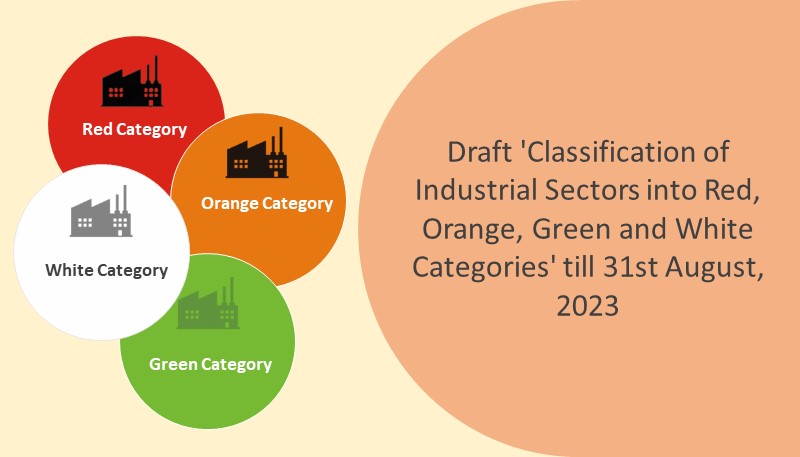 Why in news?
Why in news?
Industries categorized under the 'white category' by the Central Pollution Control Board will now not require prior permission of the state pollution control boards to establish and operate under the Air Act, 1981 and Water Act, 1974, according to two separate draft notifications of the Environment Ministry.
These permissions known officially as 'consent to establish' (CTE) and 'consent to operate' (CTO) are granted to regulate industries that discharge effluents or emit pollutants into the environment.
Categorization of Industry
- The purpose of categorization of industry is to ensure that industries are established in a manner which is consistent with the environmental objectives.
- The Ministry of Environment, Forest and Climate Change (MoEFCC) has developed the criteria of categorization of industrial sectors based on the Pollution Index which is a function of the emissions (air pollutants), effluents (water pollutants), hazardous wastes generated and consumption of resources.
- For this purpose the references are taken from the Water (Prevention and Control of Pollution) Cess (Amendment) Act, 2003, Standards so far prescribed for various pollutants under Environment (Protection) Act, 1986 and Doon Valley Notification, 1989 issued by MoEFCC.
- The Pollution Index PI of any industrial sector is a number from 0 to 100 and the increasing value of PI denotes the increasing degree of pollution load from the industrial sector.
The following are the criteria on 'Range of Pollution Index' for the purpose of categorization of industrial sectors.
- Industrial Sectors having Pollution Index score of 60 and above - Red category
- Industrial Sectors having Pollution Index score of 41 to 59 - Orange category
- Industrial Sectors having Pollution Index score of 21 to 40 - Green category
- Industrial Sectors having Pollution Index score incl. & upto 20 - White category
- So white category of industries pertains to those industrial sectors which are practically nonpolluting or least polluting.
- Wind and solar power projects, assembly of air coolers, bicycle assembly are some examples of the activities that come under the white category.
GS3/Economy
What is Indexation in calculating LTCG tax?
Source: Indian Express
Why in news?
The withdrawal of the indexation benefit from the long-term capital gains (LTCG) tax regime has emerged as a contentious decision in the Union Budget for 2024-25.
What is Indexation?
- Indexation is a method used to adjust the purchase price of an asset to account for inflation over the period it was held. This reduces the taxable capital gain, as it reflects the increase in the asset’s value due to inflation.
Purpose:
To ensure that the taxpayers are taxed only on the real gains and not on the inflationary increase in the value of the asset.
Changes in the LTCG Regime
- The new LTCG regime removes the indexation benefit for property, gold, and other unlisted assets.
- The LTCG tax rate is reduced from 20% to 12.5%.
- For assets purchased before 2001, fair market value as of April 1, 2001, is considered the cost of acquisition.
Implications of the Changes
- The government claims the changes simplify the capital gains tax structure without causing a loss to most taxpayers.
- The uniform tax rate for various asset classes is intended to benefit both taxpayers and tax authorities.
Concerns for Taxpayers
There was significant concern, particularly in the residential real estate sector, about increased LTCG tax liabilities. The government clarified that the new regime would be beneficial in most cases, as real estate returns typically outpace inflation.
The Income Tax Department explained that:
- For properties held for 5 years, the new regime applies if the value has appreciated 1.7 times or more.
- For properties held for 10 years, the new regime applies if the value has increased to 2.4 times or more.
Back2Basics: Capital Gains Tax Overview
Details
- Definition: Tax on profit from the sale of a capital asset.
- Launch: Introduced in 1956, as part of the Income Tax Act, 1961.
Types
- Short-Term Capital Gains (STCG): Held for ≤36 months (≤12 months for specified assets).
- Long-Term Capital Gains (LTCG): Held for >36 months (>12 months for specified assets).
Tax Rates (STCG)
- With STT: 15%
- Without STT: Applicable income tax slab rates.
Tax Rates (LTCG)
- Listed Equity Shares & Equity-Oriented Funds: 10% on gains >₹1 lakh without indexation.
- Other Assets: 20% with indexation (proposed 12.5% without indexation from FY 24-25).
Purpose of Indexation
- To tax only the real gains, accounting for inflation.
Formula (Indexation)
- Indexed Cost of Acquisition: (Cost of Acquisition × CII of sale year) / CII of purchase year
- Indexed Cost of Improvement: (Cost of Improvement × CII of sale year) / CII of improvement year
GS2/Polity
Right to be Forgotten
Source: Indian Express
Why in News?
The Supreme Court agreed to hear a case by online legal chronicler (Indian Kanoon), whose outcome will likely shape the contours of the “right to be forgotten”. The online portal challenged a Madras HC order, which after reversing a trial court judgment convicting a person of sexual assault charges, had directed the portal to remove the conviction judgment.
What is the Right to be Forgotten?
- It is the right to have publicly available personal information removed from the internet, search engines, databases, websites, or any other public platforms.
- One can seek this right when their personal information is no longer necessary or relevant and the presence of his/her digital footprint violates their right to privacy.
How is the 'Right to be Forgotten' Interpreted in India?
- In India, there is no statutory framework that prescribes the right to be forgotten.
- The Personal Data Protection Bill 2019 and court rulings have expressly recognized this right.
The Personal Data Protection (PDP) Bill 2019:
- The Bill gave an individual the right to restrict or prevent the continued disclosure of their personal data under certain circumstances.
Court Rulings:
- The SC in the KS Puttaswamy or Right to privacy judgment (2017) recognized the right to control one's existence on the internet.
- High courts have taken a broader view of the issue, balancing the right to be forgotten with the right to information of the public.
When can the ‘Right to be Forgotten’ be Asserted?
- This right can be asserted when personal information is no longer necessary, relevant, or correct and serves no legitimate interest.
- However, there are exceptions where this right cannot be exercised, such as when the information is necessary for freedom of expression, compliance with legal obligations, or in the public interest.
Questions to be Addressed by the SC in the ‘Right to be Forgotten’ Case
- The SC has to decide whether the right to be forgotten is a fundamental right and, if so, how it relates to other fundamental rights guaranteed by the Constitution of India.
- Two questions before the SC include whether a person can demand erasure of their conviction judgment upon reversal by a higher court and if a higher court can order a web portal to expunge a conviction judgment.
GS1/Geography
YAMUNA RIVER
Source: Hindustan Times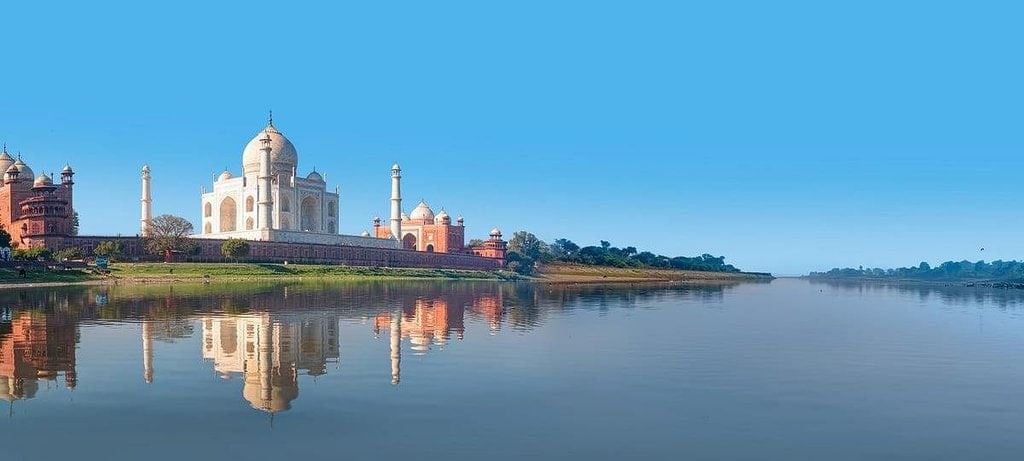
Why in news?
Several structures in the Yamunotri Dham area were damaged after water levels of the Yamuna River surged due to heavy rains. Yamunotri Dham is a part of Chota Char Dham (along with Gangotri, Kedarnath, and Badrinath), the four major Hindu pilgrimages sites in the Himalayas.
Key Takeaways
- The Yamuna River originates from the Yamunotri Glacier near Bandarpoonch Peak in the Mussoorie range of the Lower Himalayas in the Uttarkashi district of Uttarakhand, India.
- It flows swiftly through the Himalayan foothills, exits Uttarakhand, and enters the Indo-Gangetic Plain.
- Along the border between Uttar Pradesh and Haryana, it feeds the Eastern and Western Yamuna canals.
Cities and Landmarks
- The Yamuna passes through Delhi, where it feeds the Agra Canal.
- It then flows south-eastward near Mathura, passing through Agra, Firozabad, and Etawah.
Confluence
- Near Prayagraj (Allahabad), after a course of about 855 miles (1,376 km), the Yamuna joins the Ganges (Ganga) River.
- This confluence is an especially sacred place for Hindus and hosts annual festivals and the Kumbh Mela, attended by millions of devotees.
Tributaries
- The Yamuna is nourished by several tributaries such as Chambal River, Sindh River, Betwa River, Hindon River, Ken River, and Tons River.
GS3/Economy
Government Proposes Including Class 9-11 Performance in Class 12 Report Card
Source: Business Standard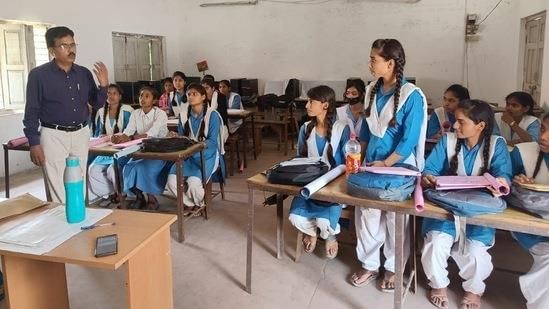
Why in news?
A recent report by PARAKH, a unit established within NCERT to standardize assessments across school boards, recommends that a student’s performance in Classes 9, 10, and 11—based on exams and continuous classwork—should contribute to their final marks at the end of Class 12.
- This recommendation aligns with the National Education Policy and aims to ensure common assessment standards, develop capacity, conduct achievement surveys, and establish equivalence among different school boards.
About
- National Assessment Centre- PARAKH was set up in NCERT as an independent body in 2023.
- PARAKH team will consist of leading assessment experts with a deep understanding of the education system in India and internationally.
- PARAKH will eventually become the national single-window source for all assessment-related information and expertise, with a mandate to assist all forms of learning assessment, both nationally and globally.
Objective
To fulfill the basic objectives of setting norms, standards, guidelines and implement activities related to student assessment along with other tasks as mandated by the National Education Policy (NEP) 2020.
Four major areas of focus for PARAKH
- Capacity Development in Competency-Based Assessment: Project Vidyasagar is organizing workshops across India to familiarize educators with the new pedagogical and policy changes in the National Curriculum Framework 2023. The goal is to bridge gaps in implementing competency-based learning and teaching.
- Large-Scale Achievement Survey: PARAKH conducted the State Educational Achievement Survey in November 2023, assessing students in Grades 3, 6, and 9 across 30 States/UTs. The survey aims to monitor and assess educational competencies in foundational literacy, numeracy, language, and mathematics.
- Equivalence of School Boards: PARAKH is working to standardize examination reforms across all Indian school boards. Regional workshops were held to collect data on administration, curriculum, assessments, and infrastructure. A report was prepared, and national workshops were conducted to discuss and draft policy recommendations for equivalence. The goal is to allocate credit points to academic, vocational, and experiential learning.
- Holistic Progress Cards: The Holistic Progress Card, or HPC, will no longer depend on marks or grades to evaluate a student’s academic performance. Instead, it will rely on a 360-degree evaluation. Under the HPC model, the students will be regularly assessed through class activities where they are not just passive learners but active agents. The activities will prompt students to apply diverse skills and competencies that will demonstrate whether they have been able to grasp concepts.
Significance
- Uniformity: PARAKH would be expected to address the issue of differences in scores among students associated with different boards, who are at a disadvantage during college admissions when compared to their CBSE peers.
- Standardization: It will establish and implement technical standards for test design, administration, analysis and reporting at all levels of schooling.
- Skill development: It will encourage and help school boards to shift their assessment patterns towards meeting the skill requirements of the 21st century.
Include performance from Classes 9, 10, and 11 in final assessment for class 12
- Include performance from Classes 9, 10, and 11 in the final Class 12 report card, with a weight of 15% for Class 9, 20% for Class 10, 25% for Class 11, and 40% for Class 12.
Evaluation using combined method
- Formative assessments (continuous classroom assessments through holistic progress cards, group discussions, projects) and summative assessments (term-end examinations).
- In Class 9, 70% of the final score be drawn from formative assessments and 30% from summative assessments.
- In Class 10, the final score will be based 50% on formative assessments and 50% on summative assessments.
- For Class 11, it will be 40% formative and 60% summative assessments.
- In Class 12, the weight for formative assessments will drop to 30% with 70% of the final score based on summative assessments.
Assessments be in terms of credits
- PARAKH has also suggested that the assessments be in terms of credits: a student can earn 40 credits in Classes 9 and 10 each, and 44 credits in Classes 11 and 12 each.
- In Classes 9 and 10, 32 credits will be subject-specific (12 credits in three languages; four credits in mathematics; four for science, four for social science etc).
- Facilitate credit transfer in line with the National Credit Framework
- Recommendations include that boards should develop a system of credit transfer in line with the National Credit Framework.
GS3/Economy
Ethanol Used In Petrol Now More From Maize, Damaged Foodgrains Than Sugar
Source: Indian Express
Why in News?
In the current supply year, from November 2023 to October 2024, sugar mills and distilleries provided 401 crore litres of ethanol to oil marketing companies by June 30. Of this total, 211 crore litres (52.7%) were produced using maize and damaged food grains (primarily broken or old rice unfit for human consumption). The remaining 190 crore litres were derived from sugarcane-based feedstocks, including molasses and whole juice/syrup.
About Biofuel (Definition, Purpose, Types of Biofuels)
- Biofuel is a fuel produced over a short time span from biomass, rather than by the slow natural processes involved in the formation of fossil fuels like oil.
- Biomass can be used directly as fuel, but biofuel is usually liquid or gaseous, used for transportation.
- Common biofuels include bioalcohols (e.g., ethanol), biodiesel, and bio-oils.
Generations of Biofuel
- First generation biofuels are made from sugars and vegetable oils.
- Second generation biofuels are made from non-food crops and waste materials.
- Third generation biofuels are derived from algae.
What is Ethanol Blending?
- Ethanol is a biofuel produced by the fermentation of sugars or petrochemical processes.
- In blending, ethyl alcohol derived from agricultural products is mixed with petrol.
How is Ethanol Produced?
- India produces ethanol from sugarcane-based raw materials like molasses, sugarcane juice, and surplus rice.
- Global ethanol production was over 110 billion liters in 2019, with major producers being the US and Brazil.
Benefits of Ethanol Blending
- India's ethanol blending can reduce petroleum dependency, saving billions of dollars and lowering pollution.
- Ethanol blending is part of India's Biofuel Policy, aiming for 20% ethanol and 5% biodiesel blending by 2025.
Positive Change in Ethanol Production
- In the current supply year, ethanol production in India has shifted to maize and damaged grains, surpassing 50% for the first time.
- This change is due to the expansion of feedstocks allowed in ethanol production and government incentives.
Reasons Behind this Positive Change
- The Ethanol Blended Petrol program has diversified feedstocks, including grains, due to increased demand and supply chain adjustments.
- Maize has become a primary feedstock, benefitting farmers but leading to shortages in other industries.
|
38 videos|5293 docs|1118 tests
|
FAQs on UPSC Daily Current Affairs: 29 July 2024 - Current Affairs & Hindu Analysis: Daily, Weekly & Monthly
| 1. What is the significance of NICOBAR PORT PLAN? |  |
| 2. How does NASA's Perseverance Rover contribute to space exploration? |  |
| 3. What is the impact of the gradual Snowfall Pattern Shift in Himachal Pradesh? |  |
| 4. What are the White Category Sectors and why are they important? |  |
| 5. How does Indexation affect the calculation of LTCG tax? |  |





















